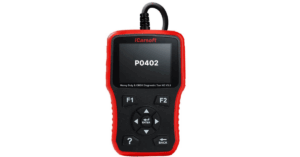Genuinely speaking, The National Highway Traffic Safety Administration data show that there are 11,000 accidents involving tire failure and 200 deaths due to tire failure annually, as most of these accidents are due to under-inflated tires. Hence, optimized inflation of tires at the specified air pressure by the vehicle manufacturer is an essential factor for braking performance, handling, control, and optimum stability.
Therefore, most of the new models of vehicles have Tpms that show a warning light on the dashboard if a tire becomes extremely low on air. In the end, there is a big issue with seeing Tpms light on, but the tires are just fine.
Therefore, what are the causes of the problem, and how can we overcome this? Read further to find out. However, before going into the details of the causes and solutions of tire pressure light keeping on, it is essential to get knowledge of the basic idea of technology measuring tire pressure inside the car.
Tpms Light: What Does It Mean
What should you do when the TPMS icon lights up? The first step to do is to use a gauge and check your tire pressures manually then add air to the tire until the pressures attain the specification of the manufacturer. Remember that your TPMS is not a replacement for routine air pressure. This is an indicator when the pressure is getting low, but the tire may lose the required pressure much earlier than the TPMS warning lamp goes on. The TPMS lights up when the tire pressure is either low or high.
Tpms Light on Honda Illuminates While Driving
If the TPMS light is on and flashes, then at least one of your tires has low pressure kept to the minimum. Check the pressure of every tire using a gauge, find out the reason for the pressure loss, and add air into the tire that requires it.
Tpms Light Honda Goes On And Off
If your tire pressure fluctuates as close to the threshold value, the Tpms light alert may be triggered by a change in the ambient temperature. Usually, the light is activated by the drop of air pressure at night due to a lower ambient temperature that results in the light turning on; the light gets off when there is an increase in air pressure at day times; it is because of the rise of ambient temperature and heat that is generated by driving the car. Use a gauge to feel the pressure of every tire and inflate any tire that has low pressure.
Tpms Honda Light Flashes And Then Stays On
When the Tpms light goes on and off several times for about 60 seconds to 90 seconds, for example, whenever you start your vehicle and then remain on as long as the system is not functioning correctly, this indicates that the TPMS needs to be inspected. When it is not repaired, the system will not be working and hence will not be able to alert you if your tire pressure is low.
Use a gauge to check the air pressure of all tires, but add the air only to those tires that need it.
ALSO READ :
Emissions System Problem Honda: Causes and Solutions
WHAT TO DO WHEN YOUR Check Engine Light Flashing?
What Does the Service ESC Light Mean? Should You Worry About It
Reasons Behind Honda TPMs light on, but tires are fine
Sometimes, when the tires are not under-inflated or flat, the Tpms light appears. Some reasons why this may happen are as follows:
Extreme cold weather
It is possible that the low tire pressure warning is just coming on, but it is unusually likely that all tires will flat and, that too, even if it is icy outside. Instead of taking a bigger space, the hot air becomes less dense and has a higher pressure, but inside the tire, this is just the pole of a story because the expansion means increased air pressure. Compared to this, cold air becomes dense and occupies less space inside the tire, so the condensation in the tire will, therefore, mean a loss of air pressure.
For instance, during a warm day, a tire’s inflation may read at 30 PSI, but in the early morning of the next day, the tire may show 25 PSI as the temperature drops to the low of 30 degrees, which is the coldest hour of the day.
With these extreme fluctuations, about 40 to 50 degrees Fahrenheit between day and night, your tire pressure can end up being 3 to 5 PSI higher than what it is. Therefore, we can notice that almost every driver, when the winter is approaching, is worried that the red low-pressure light will light up on his dashboard, but when he starts driving, the rubber heats up, and the indicator goes off. Air inside the tire would blow up with the coming of heat and this will lead to air pressure increasing and the light going out. Therefore, you observe the low tire pressure indicator when the pressure in the tires is normal.
Nevertheless, when the Tpms light goes off after the tires have been warmed up, you can use a pressure gauge to determine the exact PSI figures and then inflate your tires to the recommended target pressure level as disclosed on the tire placard.
Tires Sensor Fault
If you have measured tire pressure with a gauge and, aside from the fact that all of your tires are in working condition, you see the warning light go on and remain lit every time you start the car, this means that the TPMS no longer works. Since the case is about the TPMS, the nearest mechanic should be consulted and in some way, they can replace the TPMS.
Physical sensors can be subject to long-term damage from wear and tear, especially to gaskets, seals, valve caps, or the sensor tip. The batteries of the same devices that run on the sensor side have a lifespan of about 5-7 years. Enough battery level and disruption by old wear and tear can cause the TPMS sensor to malfunction, but tires are a different issue.
Yet another reason for the failure of the TPMS sensor is when there is a substance in a tire apart from air or nitrogen; for example, sealants are again used for repairing a flat that contains a liquid.
Air loss due to physical impacts
Sudden air pressure loss in the tires is quite often a case that might trigger the TPMS light to turn on, although you filled your tires correctly just a few days ago. Slipping off is due to the impact of hard and rocky surfaces or a curb, which creates a separation, even momentarily, of the seal between the tire’s and the wheel rim’s surface and, hence, a slight air leakage.
Other closely related reasons for air leakage that also triggers the Tpms light but tires in general are not a big problem are damage to the rim of the wheels caused by accidental impacts at the road due to running over stones and debris or a faulty tire valve that bleeds air slowly.
REGULAR TIRE PRESSURE CHECKS VS TPMS CAR SENSORS
The question that hasn’t been answered yet is how to check the pressure levels of tires.
Well, it is not so evident. New models with higher-level tire pressure monitor systems will be able to indicate the tire pressure on the passenger and driver side at any given moment. Nevertheless, it is not for all the TPMS system models.
In particular older vehicle models, drivers will only have an indication from the warning light when the vehicle’s PSI is low, but not an accurate measurement of the PSI. That is what a tire gauge is for.
A tire gauge is a device that we may use to measure air pressure levels inside a tire manually. These tools may be employed through the unscrewing of the cap of the valve stem and placing the measuring end on the valve stem. These measurements can then be read on the tire gauge.
Tire pressure gauges are also indispensable while checking the tire pressure in the situation of temperature fluctuations. Instances like that (where nights are still cold, but days are still warm) can malfunction the tire pressure monitoring system as it will turn on and off.
THIS IS HOW to FIX A TPMS light in Honda
The TPMS light can stay on sometimes, even after you’ve added the correct air pressure to the tires. However, in these cases, it needs to be reset.
How to reset the tire pressure sensor manually if you want to do it without going to the dealer?
Our first suggestion is to drive the car at 50 miles per hour within 10 minutes. This should reset the sensors of the tire pressure monitoring system. Another trick you can use is to attempt to start the vehicle and let it run for about 20 minutes to reset the sensors. Now switch the key to on when the vehicle is off and then hold the TPMS reset button, which is usually found under the steering wheel, until it blinks three times and removes it.
If sensors don’t reset after these actions, you’ll have to visit a tire shop or a car service center.
Pro Tips To Fix Tpms Light
- Observe the Tpms light. Is it flashing, or is it steady? Did it turn on as you were driving, or was there a significant change in the outside temperature? You need to figure out what you are looking at first.
- Don’t rely on the “eye pressures” of your tires. It’s tempting to blow in the air a little in order to make the Tpms light go out, especially when you don’t have a pressure gauge, but you have no measurement control, so there’s no way of knowing whether you have inflated the tire to the correct levels.
- In this case, over-inflating the tire can lead to a gradual decrease in the tread pattern due to the heat from the friction of the contact surface. It can also cause you to have an accident or poor ride if you’ve overinflated the tire.
- We hope that you will at least trust your tire shop a little, but even then, you should ask about how the TPMS sensors were replaced/ transplanted during a tire change visit.
- Suppose you are sure that you have inflated the tires to the appropriate level and that there is no such physical damage. In that case, most vehicles offer the possibility to reset the Tpms light from the passenger’s compartment. The actual process will depend on the car you drive, but it will involve pressing the reset button for the trip mileage and some combination of turning the car on and off.

Mian Hashir is a passionate automotive enthusiast and the lead author at Car Garagee, a website dedicated to providing in-depth car reviews, maintenance tips, and the latest news in the automotive world. With years of experience in the industry, Hashir combines his technical knowledge with a love for cars to deliver insightful and engaging content. Whether you’re a car owner or a curious reader, Mian Hashir’s articles help readers make informed decisions, from choosing the right vehicle to understanding how to keep it in top condition.












